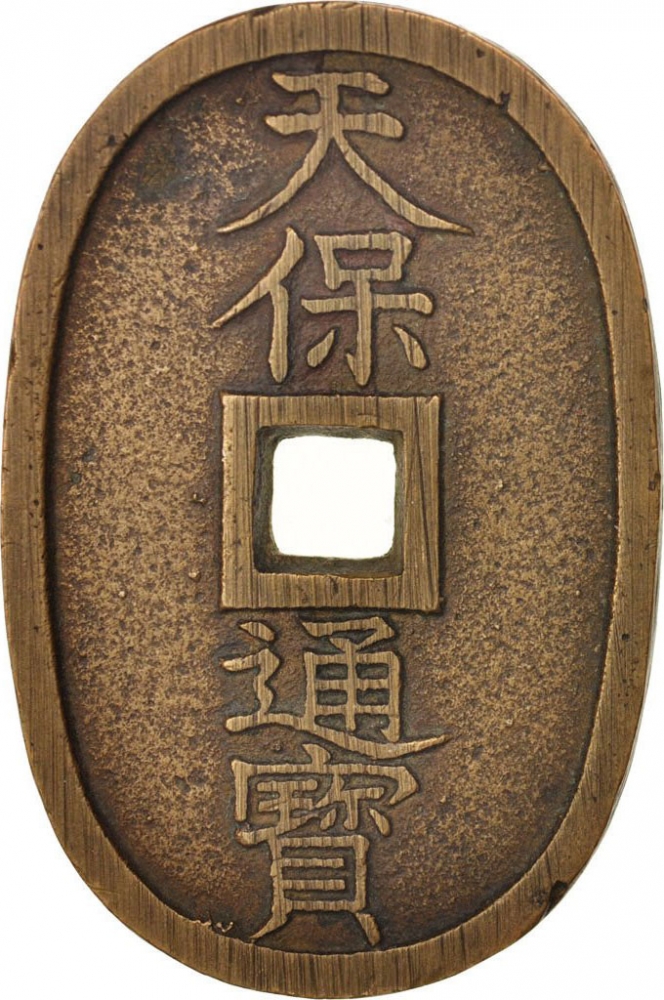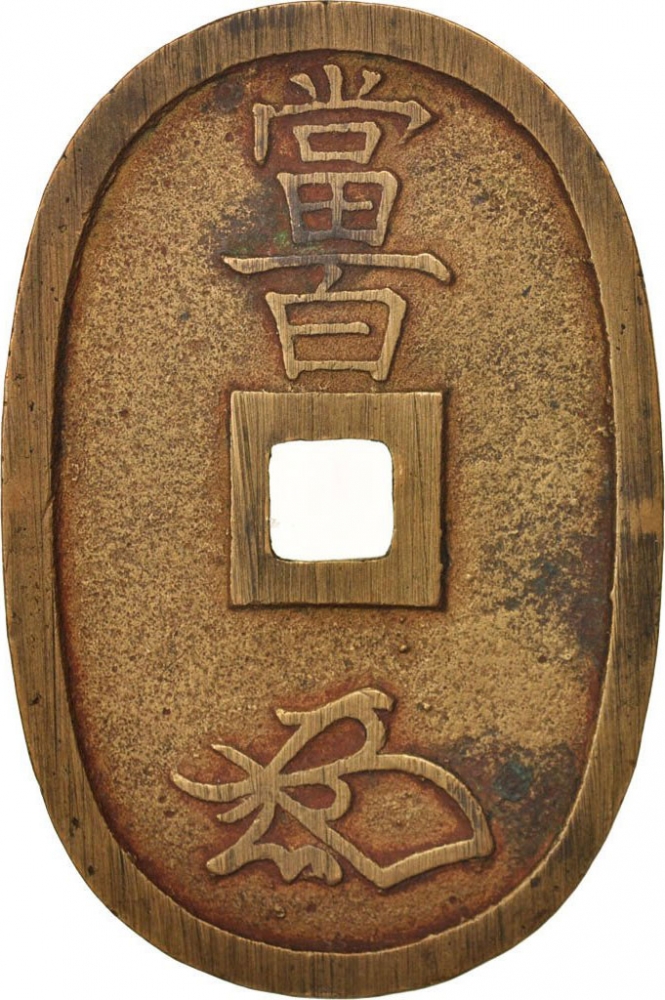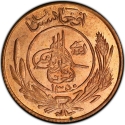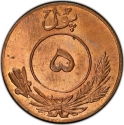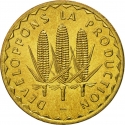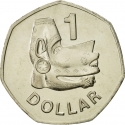You are about to finish your registration. Please check your mailbox (including spam folder). There should be a letter with a confirmation link. Check setting to make sure that your e-mail address is correct.
Send letter againDescription
The Tenpō Tsūhō, a coin from the Edo period, held a denomination of 100 mon and was initially minted in the 6th year of the Tenpō era (1835). All original coins were produced in Edo, present-day Tokyo. They were then transported to other mints, where the distinctive mint mark (shirushi, 印) was placed on the coin's edge. The coin remained in circulation for 35 years before its production ceased during the Meiji Restoration, coinciding with the introduction of the Japanese yen. In contemporary times, these coins are sought after as "lucky charms" and are avidly collected by numismatists.
The Tokugawa Shogunate, also recognized as the Tokugawa Bakufu and the Edo Bakufu, stood as the final military government of feudal Japan, existing from 1603 to 1867. The shōgun, who was the head of the government, hailed from the Tokugawa clan. This shogunate operated from Edo Castle, and this period of rule is commonly referred to as the Edo period.
Tenpō (天保) denotes a specific era in Japanese history, coming after Bunsei and preceding Kōka. This era spanned from December 1830 to December 1844. Ninko-tennō (仁孝天皇) reigned as the emperor during this period.
Obverse

|
Depicts inscription "Tenpō" (天保) a reference to the era this coin was designed in, and "Tsūhō" (通寳) which means "circulating treasure" or currency. 天 |
|---|---|
Reverse

|
Depicts a value 當百 (Tō Hyaku, equals 100), and the Kaō of Gotō San'emon. 當 |
| Edge |
Characteristics
| Material | Bronze |
| Weight | 20.7 g |
| Diameter | - |
| Width | 32 mm |
| Height | 49 mm |
| Thickness | 2.6 mm |
| Shape |
|
| Alignment | Medal |
| Mint |
Japan Mint
|
